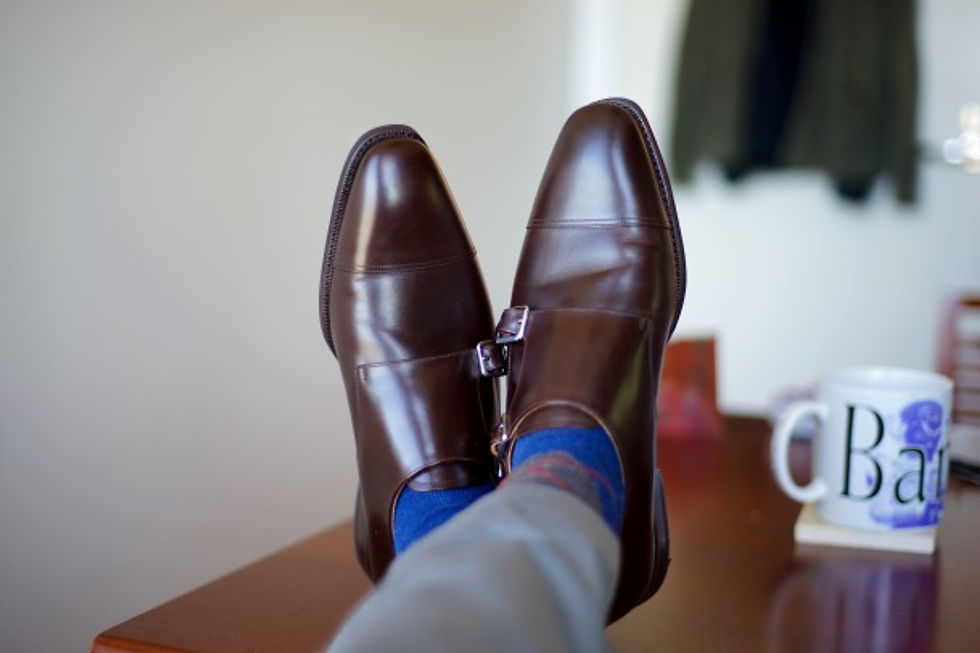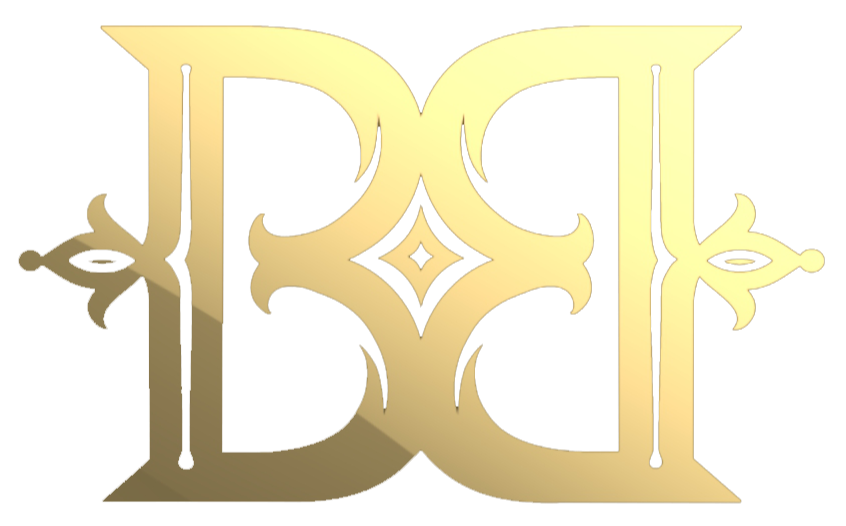From Raw Hide to Refined Craft: The Art of Shoe-Making
- Tom Goedhart
- Jan 15, 2016
- 3 min read
Updated: Dec 19, 2024
If you’ve ever worn leather shoes, you’re probably familiar with the creases that form on the toe box. Annoying, right? I used to think the same, convinced that these wrinkles were a hallmark of cheap leather. Naively, I assumed splurging on an expensive pair would spare me the trouble. Spoiler alert: It doesn’t - unless you’re dropping over $600 on shell cordovan leather shoes.
In this piece, I’ll walk you through the most popular types of leather used for shoes, helping you appreciate what keeps your feet supported and stylish.

Leather shoes - if you wear them, they’re bound to crease!

Let’s face it - creases are inevitable. Even high-quality leather will develop wrinkles with wear. However, the type of leather and craftsmanship significantly affect how gracefully they age. Here's a breakdown of the most common types of leather used for shoes:

Photo: Real Men Real Style
Full grain is the highest quality leather, which is why sometimes the same type of leather can have a significant price difference - this depends on whether your shoes are made from full grain or top grain leather. Suede, on the other hand, is made from the underside of the leather, right next to the flesh.
Cow Leather
The MVP of shoe leather. Cow leather is affordable and widely available, making it the most common material for footwear. When tanned properly, it’s surprisingly durable.

For shoes priced under $150, cow leather is your go-to. While it won’t escape creasing, well-crafted cow leather shoes can last for years. Don’t underestimate their value - they’re practical, reliable, and built to endure.

Berluti shoes, the dream of men around the world.
Calfskin
Calfskin is a crowd favorite for premium shoes, but it comes at a price. A decent pair can set you back around $175, and that’s before factoring in import taxes if you’re in Vietnam.

Unlike cow leather, calfskin boasts a smoother finish and shines longer with proper care. While it’s less prone to wrinkling, this also depends on the shoe’s construction and fit. If you’re aiming for elegance and durability, calfskin is worth the investment.
Crocodile Leather
Crocodile leather stands out with its iconic textured pattern and luxurious feel. This material gained popularity in the 1950s, particularly among affluent stockbrokers.

High-quality crocodile leather is expensive, and its true durability reveals itself after about six months of wear. If you prefer low-maintenance shoes, this is a great option - quick polishing keeps them looking sharp.
Ostrich Leather

A bit of an underdog in the leather world, ostrich leather is less common. Its large, raised pores give it a unique look that’s either love-it-or-leave-it. While not as widely embraced as other leathers, it’s undeniably distinctive.
Pig Leather

Surprised? Pig leather might sound unconventional, but it has a shiny surface with interesting patterns. Thanks to its low cost, it’s often used for linings in shoes, bags, and wallets.
Reindeer Leather

Reindeer leather is simple, understated, and ideal for those seeking something different. It’s not overly dressy but still has an undeniable charm. With prices nearing $300 per pair, it’s a splurge, but one worth considering for cooler weather.
Shell Cordovan
The crown jewel of shoe leather, shell cordovan is the only type that doesn’t develop traditional creases. Instead, it forms smooth, elegant “waves.”

Crafted from the dense hide of a horse’s rump, this leather is incredibly durable and only gets shinier with wear. Expect to pay no less than $600 for a quality pair - but rest assured, the investment pays off in both aesthetics and longevity.

Regardless of the leather type, every pair of shoes will crease with use - it’s simply the nature of the material. However, investing in high-quality leather and craftsmanship ensures those creases add character rather than detract from the shoe’s appeal.
So, whether it’s cow leather or shell cordovan, remember: a good pair of leather shoes isn’t just footwear - it’s a statement of timeless style.

Comentários